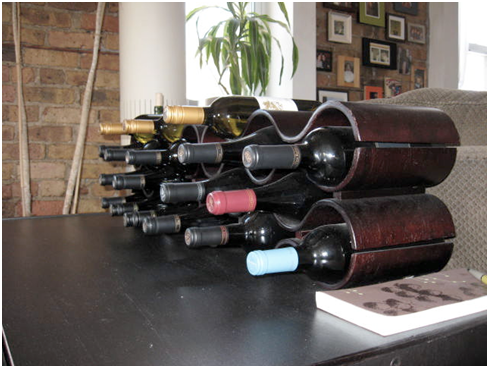See How a Bottle of Red Can Become a Top-Shelf Investment
 Selecting and buying wine is fascinating and fun, but there are always some risks involved. New labels appear all the time, and every vintage is different. Even when you know the precise wine you want, individual bottles may have had different treatment. Not many people know how to invest in fine wine, and as surreal as it may sound, sometimes a single bottle of red can become a top-shelf investment. Forget about fine art and government bonds, and turn your attention to red wine. It can offer a 900% investment return as long as you know which types are worth buying, and what are the best storing conditions. Here are some tips you might want to take into account.
Selecting and buying wine is fascinating and fun, but there are always some risks involved. New labels appear all the time, and every vintage is different. Even when you know the precise wine you want, individual bottles may have had different treatment. Not many people know how to invest in fine wine, and as surreal as it may sound, sometimes a single bottle of red can become a top-shelf investment. Forget about fine art and government bonds, and turn your attention to red wine. It can offer a 900% investment return as long as you know which types are worth buying, and what are the best storing conditions. Here are some tips you might want to take into account.
Heat can be a problem
Ideally, wine is stored in a climate-controlled environment, where it is never subjected to extremes of hot or cold. In reality, much of the wine that you find in a wine store has not had such perfect treatment. While wine can stand up to a certain amount of heat, it can cause problems if the temperature is too high, the duration is too long, or there are multiple fluctuations between hot and cool temperatures. Try to avoid wine which is kept in a store where it could be heated by sunlight during the day, or located near any other heat source. Also look for damaged foil around the cork, which can indicate that heat expansion pushed the cork partly out.
Bottles should be stored lying down
Wine bottles which have a cork should always be stored lying down. This keeps the cork from drying out and letting air into the bottle. Screw top bottles may benefit from lying on their side, too. If air gets into the wine, then oxygen can turn the wine brown and fade the taste. Choose a store that keeps wine lying down, not a store where all wine is standing up. If there is one bottle standing and the rest are on their sides, choose one of the horizontally stored bottles.
Corks and screw tops
A wine can be “corked” if certain bacterium which lives on corks gets into the wine. This gives the wine a musty odor, sometimes described as smelling like wet cardboard. Either the wine or the cork may have this odor. If you open a bottle in a restaurant, smell the cork and the wine, and take a small taste. If you find this musty smell, the wine is corked and should be sent back. Many wine makers now are using synthetic corks, or switching to screw caps, to eliminate the risk of corked wine. Expensive wines will still have a long, natural cork sealing the bottle. Screw caps, however, are demonstrating a lot of promise. They are no longer the sign of a budget wine, as some major producers are moving in this direction for a superior closure.
Where to buy wine
Grocery stores can be a convenient place to buy local wines, and other popular, reasonably priced selections. The staff rarely knows much about the wine, and the bottles are usually stored standing up, but they are very convenient, especially when you are traveling. Discount wine stores have a very large selection, and they sell a lot of wine. That means that for most of their selections, they have a fast turnover of the stock, and there is less chance that a wine has been damaged during storage. The staff is usually moderately knowledgeable, and the prices are good.
Last but not least, we have specialty wine stores which have the most staff expertise, and can help you find exactly what you are looking for, or recommend some new ideas to try. This is a great way to experiment, though the prices are higher than discount stores.
Always remember that not every type of wine improves as it ages. Whether you choose to buy 10 cases or a single bottle, make sure the storing conditions are ideal. Constant monitoring is important, as well as tasting. Before spending money on a bottle of red or white, check the market. Analyze major wine blogs, as well as the Liv-ex 100 just to have an idea about which wines are trending to be able to make a sensible investment.
Category: Investing





